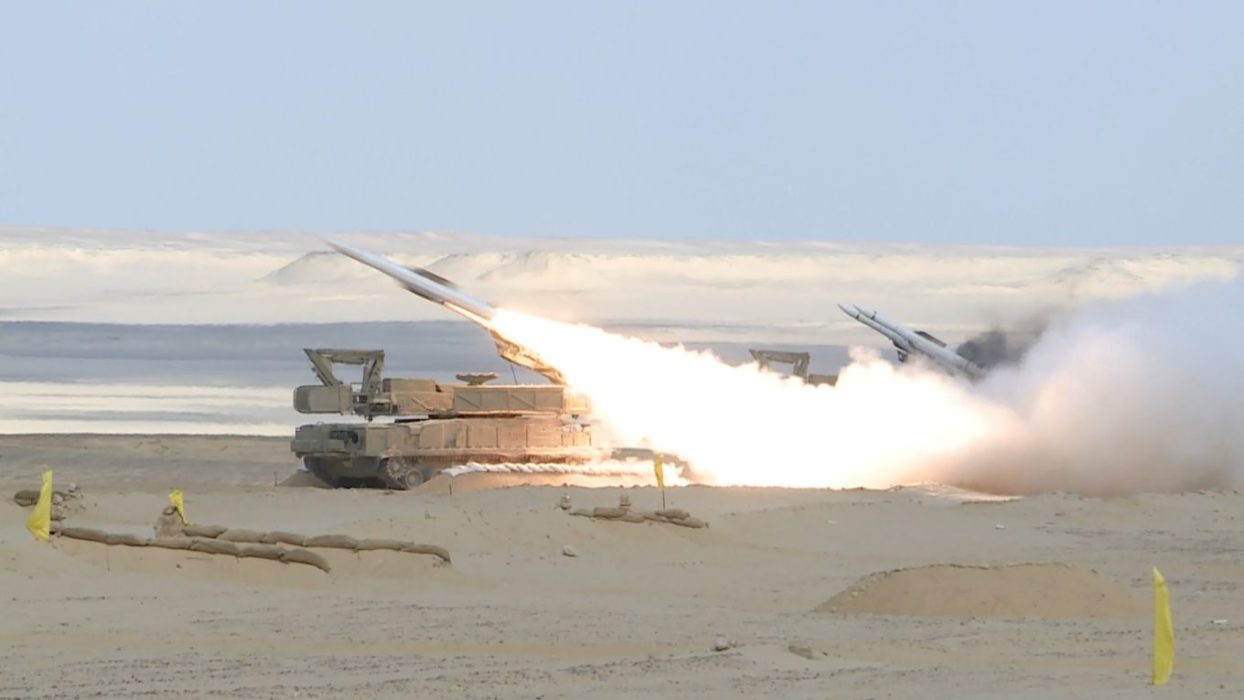by Sarah Saad
Commander of the Egyptian Air Defence Forces (EADF) Maj. Gen. Yasser Mohamad Kamal al-Toudi said that the EADF will forever remain an invincible strong bastion against whomsoever might be tempted to violate Egypt’s airspace.

Toudi made the remarks while addressing a ceremony held to mark the 54th anniversary of the Egyptian Air Defence Forces.
“Today we celebrate the 54th anniversary of the Egyptian Air Defence Forces, to pay tribute to the martyrs and pioneers of the Egyptian Air Defence Forces who sacrificed so much to keep their country’s flag flying high,” Toudi said.
In the aftermath of the 1967 Six-Day War, President Gamal Abdel Nasser issued a decree on February 1, 1968 to form the Air Defence Forces as a separate branch of the Armed Forces.
On June 23, 1969, the branch’s first commander was appointed and that was Major-General Mohamed Ali Fahmy. His main mission was undermining the Israeli Air Forces, which had to be done by building a “Missile Wall” to fend off any Israeli attacks against vital targets in Egypt.
History books record that on June 30, 1970, Egyptian air Defence missiles downed two Israeli ‘Phantom’ fighter jets and two ‘Douglas A-4 Skyhawk’ warplanes taking three pilots hostage. That day will always be a source of pride for the Air Defence Forces, for it was the beginning of the “Phantom Fall Week” as 12 Israeli jets were destroyed in a week.
The Air Defence Forces carry out their mission with full support from the political leadership and the General Command of the Armed Forces, he added.
“They focus on several main areas, including the qualitative development of armament systems through the possession of diversified sources capable of confronting advanced hostilities. This is achieved through a phased and prioritised plan, while also maintaining the current weapons and equipment assets,” Toudi told a press conference marking the Air Defence Forces Day on Saturday.
“The Air Defence Forces have recently been equipped with a range of state-of-the-art radar devices. Additionally, air monitoring points have been equipped with modern electro-optical and thermal sensors,” the commander said.
“In addition to this, modern anti-aircraft missile systems have been integrated into the air Defence arsenal. Furthermore, the automated command and control system has been updated by Egyptian experts to ensure cybersecurity,” he added.
Moreover, the education and training process has been enhanced to ensure that combat personnel are appropriately qualified and possess the necessary scientific and training skills to keep up with the advanced technology used in equipment manufacturing, he further added.
Toudi, in response to a question regarding the components of the Egyptian air Defence system, emphasised the ongoing struggle between air Defence systems and modern aerial threats, which now encompass not only fighter jets but also various types of drones, ballistic and cruise missiles, ultra-fast ground-attack weapons with small radar cross-sections, and artillery and mortar shells.
He stressed the necessity of having a comprehensive air Defence system to detect and effectively counter modern aerial threats.
“The political leadership and general command of the Armed Forces are highly committed to supporting the air Defence forces by providing them with the latest reconnaissance, early warning, and command and control systems. The goal is to enable the air Defence forces to effectively handle modern threats and challenges,” Toudi said.
He emphasised that access to information has become widespread, thanks to satellites, electronic reconnaissance systems, and international information networks. There is also a focus on immediate analysis of information using modern systems, he said. “The emphasis is not only on possessing weapons and equipment, but also on developing the capability to use them efficiently. Efforts are continuously made to develop weapon systems and enhance the skills of personnel to ensure high combat readiness and achieve surprise. The principle of “what is hidden is greater” is embraced, and there is a focus on adopting unconventional usage ideas and innovative tactics.”
In terms of the air Defence forces’ ability to innovate and enhance products, it is underscored that the political leadership prioritises technology localisation and scientific research, while relying on national talent, he said. “The air Defence forces, along with their skilled personnel, have developed an Egyptian radar, command and control centres, identification systems, target drones, and anti-drone systems in collaboration with the research centres of the Armed Forces and civilian entities. This has been achieved by benefiting from the industrial capacities of the Arab Organisation for Industrialisation and the Ministry of Military Production, ensuring the practical usability of these products by air Defence personnel. The air Defence forces consistently seek non-traditional solutions to technical problems in the face of complex technology and rapid developments in aerial threats.”
Regarding the measures taken by the air Defence forces to secure their armament and decision-making centres, Toudi highlighted the importance of cyber security and artificial intelligence in light of the immense development in the IT field and the global efforts to utilise this development in serving both the civilian and military sectors.
Cyber security has become the first line of Defence for all systems, he added.
Toudi said the air Defence forces have established cybersecurity groups and supplied them with the latest software and training programmes. They have also created a team to identify cyber threats and another to develop the protection system to neutralise these threats, he added.
He pointed out that air Defence engineers managed to upgrade the automated command and control system to the highest cybersecurity standards.






Discussion about this post